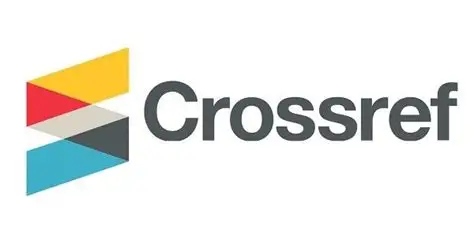FROM SCROLLING TO STAYING: THE IMPACT OF SOCIAL MEDIA ADVERTISING FORMATS ON GEN Z BRAND LOYALTY
Keywords:
Gen Z, social media advertising, short-form video, ad formats, engagement, advertising value, brand credibility, brand loyalty, mediation, moderation,,Abstract
The default brand for social media generation Z has become a touchpoint, yet evidence is mixed
on which advertising format (eg, short-form videos, stories, Hindola, static posts) manufacture
sustainable loyalty instead of fleeting engagement. This study develops and validate a model,
which connects the AD format to General Z brand loyalty, which accumulates for negative
effects from perceived infiltration, through alleged ED value (entertainment, informability),
flow/immersion and advertising reliability. We also test the moderation by personalization fit,
platform interaction and advertising frequency. Using a cross-sectional survey of Jean Z
Consumers (N of 400-500), we analyze data through bootstraped arbitrations and moderation
with credibility check, confirmation factor analysis (CFA), and structural equation modeling
(SEM). Results are expected to show short-form videos and interactive formats get high
entertainment and immersion, which increase attudinal and practical loyalty; However, the
profit decreases when the infiltration or frequency is high, and when privatization and platform
interactions are high then it is strong. We discuss the implications for creative strategy, media
plans and brand stewardships on younger platforms.
References
Chaudhuri, A., & Holbrook, M. B. (2001). The chain of effects from brand trust and
brand affect to brand performance. Journal of Marketing, 65(2), 81–93.
https://doi.org/10.1509/jmkg.65.2.81.18255
Ducoffe, R. H. (1995). How consumers assess the value of advertising. Journal of
Advertising, 24(1), 27–40. https://doi.org/10.1080/00913367.1995.10673473
Ducoffe, R. H. (1996). Advertising value and advertising on the web. Journal of
Advertising
Research,
(5),
https://www.journalofadvertisingresearch.com/)
–35.
(Publisher
page:
Hair, J. F., Hult, G. T. M., Ringle, C. M., & Sarstedt, M. (2019). A Primer on Partial
Least Squares Structural Equation Modeling (PLS-SEM) (2nd ed.). SAGE.
https://us.sagepub.com/en-us/nam/a-primer-on-partial-least-squares-structural
equation-modeling-pls-sem/book244583
Hollebeek, L. D., & Macky, K. (2019). Digital content marketing’s role in fostering
consumer
engagement.
Business
https://doi.org/10.1016/j.bushor.2018.08.010
Horizons,
(1),
–25.
Keller, K. L. (1993). Conceptualizing, measuring, and managing customer-based brand
equity. Journal of Marketing, 57(1), 1–22. https://doi.org/10.2307/1252054
Preacher, K. J., & Hayes, A. F. (2008). Asymptotic and resampling strategies for
assessing and comparing indirect effects. Behavior Research Methods, 40(3), 879–891.
https://doi.org/10.3758/BRM.40.3.879
Teixeira, T. (2012). The new science of viral ads (video viewing decisions). Journal of
Marketing Research, 49(2), 144–159. https://doi.org/10.1509/jmr.10.0204
Yoo, B., & Donthu, N. (2001). Developing and validating a multidimensional
consumer-based brand equity scale. Journal of Business Research, 52(1), 1–14.
https://doi.org/10.1016/S0148-2963(99)00039-9
Brackett, L. K., & Carr, B. N. (2001). Cyberspace advertising vs. other media:
Consumer vs. mature student attitudes. Journal of Advertising Research, 41(5), 23–32.
Cho, C. H., & Cheon, H. J. (2004). Why do people avoid advertising on the internet?
Journal of Advertising, 33(4), 89–97.
Dehghani, M., Niaki, M. K., Ramezani, I., & Sali, R. (2016). Evaluating the influence
of YouTube advertising for attraction of young customers. Computers in Human
Behavior, 59, 165–172.
Ducoffe, R. H. (1995). How consumers assess the value of advertising. Journal of
Current Issues & Research in Advertising, 17(1), 1–18.
Li, H., Edwards, S. M., & Lee, J. H. (2002). Measuring the intrusiveness of
advertisements: Scale development and validation. Journal of Advertising, 31(2), 37
Logan, K., Bright, L. F., & Gangadharbatla, H. (2012). Facebook versus television:
Advertising value perceptions among females. Journal of Research in Interactive
Marketing, 6(3), 164–179.
Martí-Parreño, J., Ruiz-Mafé, C., & Scribner, L. L. (2013). Advergames: Do they affect
attitudes toward the brand? International Journal of Advertising, 32(3), 392–415.
Wang, Y., & Sun, S. (2010). Examining the role of beliefs and attitudes in online
advertising: A comparison between the USA and Romania. International Marketing
Review, 27(1), 87–107.


